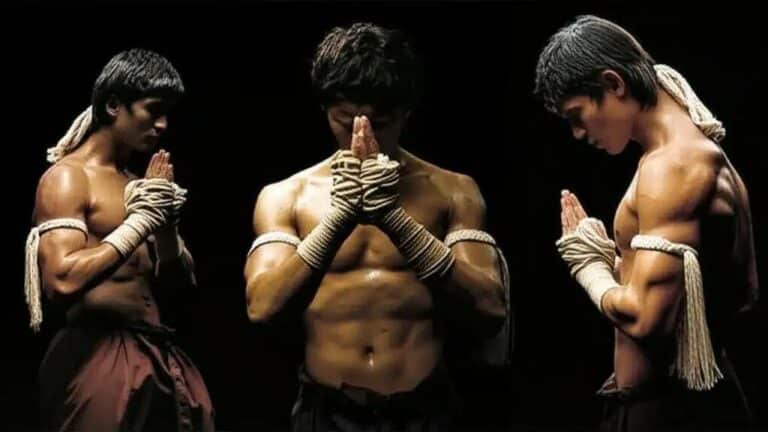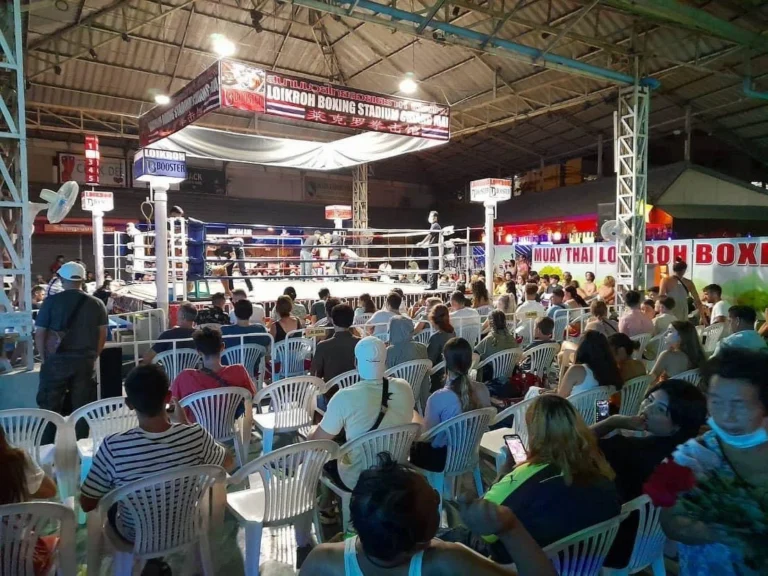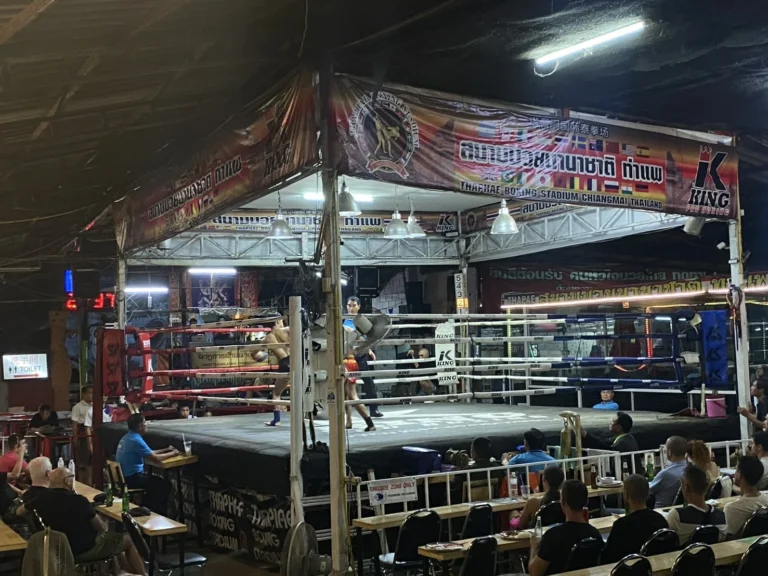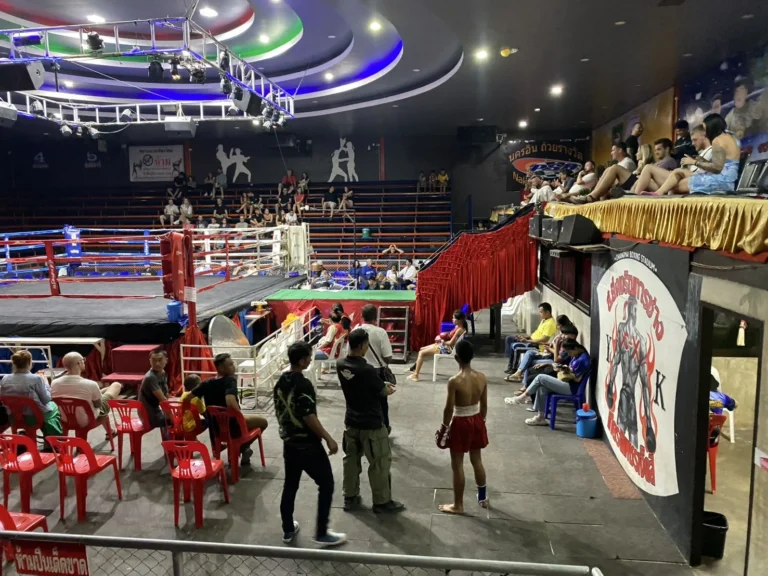Globally known as “The Art of Eight Limbs,” Muay Thai is famous for its powerful strikes and deep cultural background. Its worldwide popularity as a strong martial art and exciting sport is clear, with thousands of gyms open today. To fully grasp its powerful kicks and sharp elbows, you have to look past the ring and into Thai history. This article examines the long history of Muay Thai, following its path from a deadly battlefield skill to a respected global sport. Learning the muay thai origin helps you understand the spirit of a nation built through conflict and celebrated in peacetime.
The History of Muay Thai: Tracing the Roots of a National Treasure
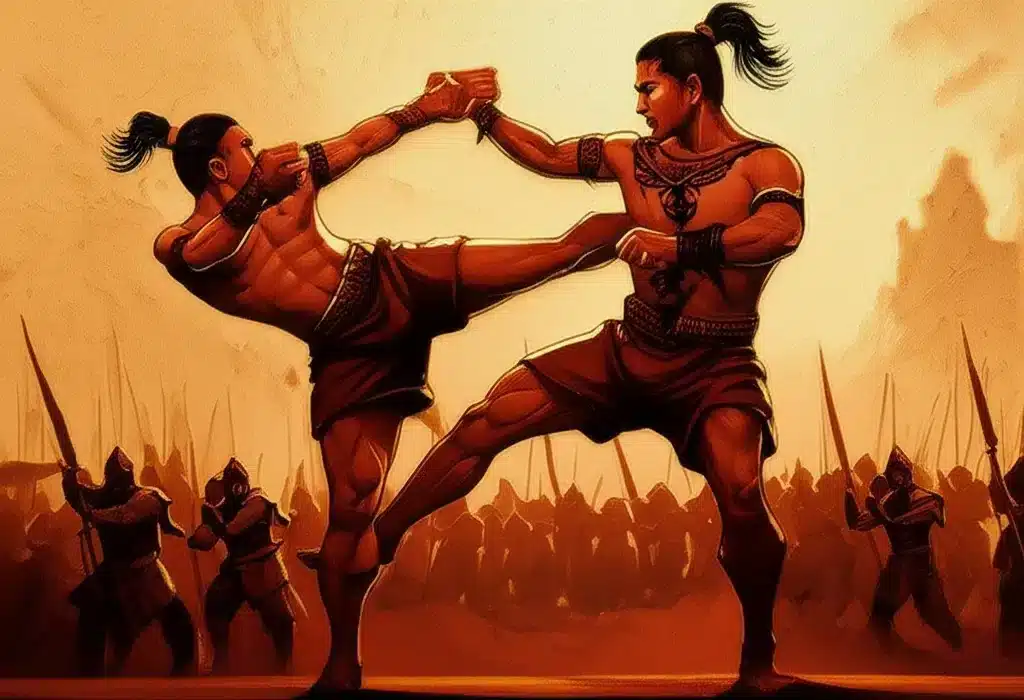
The precise start of Muay Thai is unclear because many historical records were lost in wars that formed the nation. But, people generally agree the art’s beginning is tied to the need for self-defense and military fighting in old Siam (now Thailand). It grew as a way for soldiers to fight without weapons, and its methods were improved over many years of war.
Legends and Theories: Where Does Muay Thai Come From?
A single founder cannot be identified, but historical proof shows Muay Thai developed as a key military skill as far back as the 13th-century Sukhothai Kingdom. War manuals from that time included unarmed combat training along with weapon use. This made Muay Thai a practice for both royalty and soldiers. It was seen as a necessary part of a warrior’s training, crucial for defending the kingdom.
Muay Boran: The Ancestor of Modern Muay Thai (Original Muay Thai)
Before modern rules and rings existed, there was Muay Boran, meaning “ancient boxing.” This is the original Muay Thai, a basic and very effective fighting system made for survival. Muay Boran is a general name for different local fighting styles that were around before the sport’s rules were set in the 1930s. These old arts had deadly moves, grappling, and ground fighting, all of which are not allowed in the modern sport. This distinction is crucial when comparing Muay Thai vs. other martial arts, as its original form was far more comprehensive in its purpose.
The Role of Muay Thai in Thai National History
- Sukhothai Period (c. 1238–1438): Muay Thai was part of royal training. Kings trained in it to build strength and leadership.
- Ayutthaya Period (1351–1767): This was a golden age for Muay Boran, and the art grew. The kingdom was often at war, so fighting skills were needed to survive. Fights became popular entertainment at festivals, and famous fighters appeared.
- Thonburi and Rattanakosin Periods (1767–Present): After Ayutthaya fell, Muay Thai was key to rebuilding the military under King Taksin the Great. Later, in the Rattanakosin period, the art started to change from a military skill into Thailand’s national sport with strong royal support.
The Reformation of Muay Thai: From Rope-Bound Fists to International Sport

The early 20th century was a key turning point for the history of Muay Thai. With influence from Western boxing, the sport was greatly modernized.
Key Changes in the Rattanakosin Era
Fights shifted from open temple areas to square rings with ropes. The biggest change was swapping traditional rope hand wraps (Kard Chuek) for modern boxing gloves. This change, along with the adoption of shorts and other protective items, defined the look of the modern fighter. Today, having the right essential Muay Thai training gear is crucial for safety and performance. Timed rounds and a clear set of rules were also added around the 1920s and 1930s. These steps were taken to make fighting safer and to create a standard for competitions.
The Debate: Is Original Muay Thai Being Lost?
This modernization started a debate. The changes made Muay Thai a safer and more available global sport. But, they also removed many traditional Muay Boran techniques. The original art was for life-or-death fights, while modern Muay Thai is a ring sport about points and knockouts. This change shows the balance between keeping a deadly martial art and making a popular international sport.
Timeline: Key Milestones in the History of Muay Thai
- Sukhothai Kingdom (c. 1238-1438): Muay Thai becomes a high art for royalty and military training.
- Ayutthaya Kingdom (1351–1767): This is the “Golden Age.” The story of Nai Khanomtom begins, and King Suriyenthrathibodi, the “Tiger King,” supports the art.
- Thonburi Kingdom (1767–1782): After the fall of Ayutthaya, Muay Boran is key for rebuilding the military.
- Rattanakosin Kingdom (1782–Present):
- King Rama V (1868–1910): Another golden age. The king actively supports competitions.
- c. 1921-1930s: Thailand’s first boxing ring is built. Set rules are introduced, starting modern Muay Thai.
- 1945: The famous Rajadamnern Stadium is built. It becomes a well-known home for the sport, setting a precedent for iconic venues across the country. Today, cities like Chiang Mai boast some of the best Muay Thai stadiums, each offering a unique atmosphere for spectators.
- 21st Century: The International Olympic Committee (IOC) fully recognizes Muay Thai. The sport is celebrated as a main part of Thailand’s soft power.
A Comparison of the 4 Main Styles of Original Muay Thai
Muay Boran was not the same everywhere. It was different in each region, with every style focusing on different plans.
- Muay Chaiya (Southern Style): Famous for strong defense, good posture, and quick footwork to avoid strikes. This style uses powerful elbow and knee strikes.
- Muay Korat (Eastern Style): Focuses on strength and hard strikes. Its main technique is the “buffalo swing punch,” which was said to be strong enough to knock down a buffalo.
- Muay Lopburi (Central Style): Known for its smart fighting, accuracy, and very precise punches. It is one of the oldest Muay Boran styles.
- Muay Tha Sao (Northern Style): Known for its speed, quickness, and fast, adaptable footwork.
Legendary Figures Who Shaped Muay Thai History

While the art was shaped by centuries of warfare and royal patronage, its legacy is often told through the stories of its greatest practitioners. While these historical icons laid the foundation, countless others have carried the torch. Learning about the most famous Muay Thai boxers of both past and present provides a deeper appreciation for the sport’s lineage.
Pra Chao Suea (The “Tiger King”)
King Suriyenthrathibodi (reigned 1703-1709), called the “Tiger King,” was so enthusiastic about Muay Thai that he would wear a disguise to fight in local village contests. He often beat the local winners. His time as king is seen as a peak for the sport’s popularity.
Nai Khanomtom
Known as the “Father of Muay Thai,” Nai Khanomtom is a national hero. He was a prisoner of war after Ayutthaya fell in 1767. In 1774, he got a chance to fight for his freedom. The story says he beat ten of Burma’s best fighters in a row. He won his freedom and made Muay Thai famous for its effectiveness and strong spirit. His win is celebrated every year on March 17th as “Boxer’s Day.”
Phraya Phichai Dap Hak
Phraya Phichai Dap Hak was a brave general for King Taksin the Great and an expert in fighting with and without weapons. He is famous for fighting on after one of his swords broke. He used his Muay Boran skills to guide his soldiers to a win. He became a symbol of bravery and the warrior spirit.
Recent Developments and Trends
Conservation and Revival of Muay Boran
There is a growing effort to save and support the old forms of Muay Thai. The Thai government actively promotes Muay Thai as “Soft Power” to increase its cultural and economic impact. This includes work to get Muay Thai listed by UNESCO as an Intangible Cultural Heritage, celebrating not only its history but also the significant benefits of Muay Thai for fitness and mental health.
Global Recognition
Muay Thai’s global position is at its highest point. The United Nations recognized it as a sport for everyone in 2014. The International Federation of Muaythai Associations (IFMA) got full recognition from the International Olympic Committee (IOC) in 2021. This was a big step for its possible inclusion in the Olympic Games. The sport will also be a full medal event at the Islamic Solidarity Games and will appear in the 2026 Asian Indoor Games, showing its growing international status.
Frequently Asked Questions about Muay Thai Origins (FAQ)
Where did Muay Thai originate from, exactly?
There is no single starting point. The origin of Muay Thai comes from the old fighting methods of the Siamese people. It was developed over many years for battlefield fighting and self-defense. Its beginnings became clear around the 13th century.
Who is considered the “Father of Muay Thai”?
Nai Khanomtom is widely respected as the symbolic “Father of Muay Thai.” His famous victory over ten fighters shows the art’s heart, strength, and better technique.
How does Original Muay Thai differ from the sport we see today?
Original Muay Thai, called Muay Boran, was a battlefield art with no rules that was meant to be deadly. Modern Muay Thai grew into a sport in the early 20th century. It added rules, timed rounds, a ring, and protective gloves to keep fighters safe and make competitions fair.
Further Reading & Resources
If you want to learn more about the history and culture of Muay Thai, we suggest visiting the official websites of the World Muaythai Council (WMC), the International Federation of Muaythai Associations (IFMA), and Thailand’s Department of Cultural Promotion. These groups provide expert information, historical background, and news on the sport’s growth.

